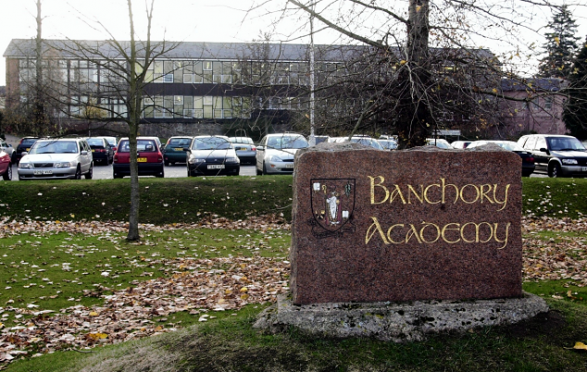Scottish parents are willing to pay an average £80,000 more to live in the catchment area of a top performing state school, according to new research from Bank of Scotland.
The study looked at house prices around Scotland’s top 20 performing state schools.
It shows the average cost of a house near one of them is £249,635, meaning buyers are paying a premium of 68% on the Scottish average of £169,552 and 21%, or £43,000 more than the cost of a typical home in the surrounding council area.
The list of schools surveyed includes two in the north-east – Cults Academy and Banchory Academy, whose catchment areas were found to have average house prices of £306,157 and £296,450 respectively.
BoS said houses in Aberdeen and Aberdeenshire were selling at an average price of £202,874 and £224,496 respectively, meaning a 51% local premium to stay near Cults Academy and a 32% increase for homes near Banchory Academy.
The bank identified three council areas – Aberdeen, Edinburgh and East Dunbartonshire – where the premium to access a top performing state school was more than £100,000, when compared to their surrounding areas.
Parents in Edinburgh were found to be paying the most, with homes in the catchment for St Thomas of Aquin’s High School costing £145,022 more than the local authority average of £232,357.
Despite the additional cost, BoS said living near a top performing state school seemed like a shrewd investment based on house price performances over the past five years.
Parents who bought a home near one of the top 20 schools in 2011 typically saw its value rise by £32,817, from £216,818 to £249,635, an increase of 15%, the bank said.
It added: “This is a significantly faster rise, in cash terms, than in Scotland as a whole, where the average house price has grown over the same period from £141,905 to £169,552 – an increase of £27,647, or 19%.
“The biggest increases in prices in the top 20 have been in East Dunbartonshire, where the average price of a house in the catchments for Bearsden and Boclair academies has gone up by 45% over last five years from £228,257 in 2011 to £331,304 in 2016.”
BoS mortgages director Graham Blair said: “Being in the catchment for a good school is one of the major considerations parents take into account when purchasing a property.
“It is clear those choosing to buy near one of Scotland’s top 20 state schools are paying a significant premium.
“While homeowners buying in these catchments are likely to make a reasonable return on their investment over the longer term, it is also important to recognise that parents on low or average incomes may be unable to get their children access to the best schools.”
